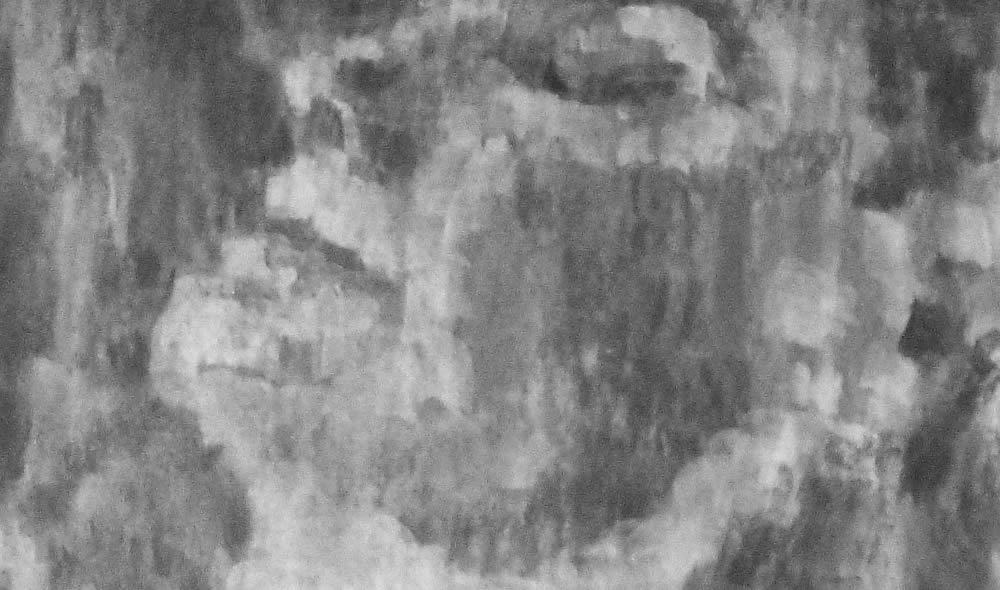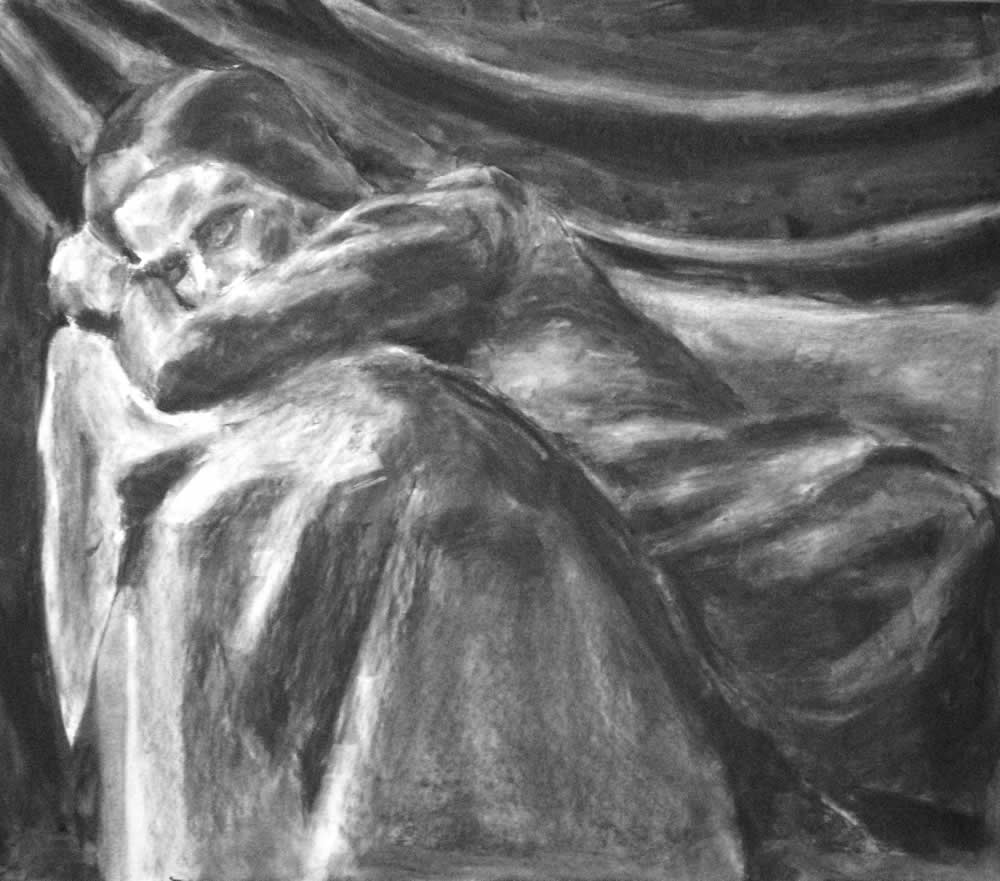Chris Moock drawing
Carving space with grey blocks
Chris, also our tutor, led the last week of term drawing with tonal shapes. Rejecting line drawing, or drawing with a sense of tracing or stroking the subject. The approach is based on creating a pattern of ‘flat’ tonal marks, where equal importance and touch is given to the every part of the image. In fact this stays true to reality, ie a picture is simply a series of marks on a 2 dimensional surface. Keeping the marks mutually supportive and similar in nature creates an interesting image, from which the subject emerges.
The focus is on the image, not the object, a searching out of the truth of the image. An internal exploration rather than a statement about the sitter. To this end, lines are too definite, too knowing of the object. Drawing by placing similar marks, say vertical 1 cm squares of different tones, helps give equal importance to each part of the image. Not knowing anything about the subject, helped by carving it out from negative space, rather than drawing it.
In this approach, the edge of the canvas matters because the process is all about the exploration of the canvas. Vertical and horizontal marks fit better than diagonals, are supported by the edges and make for strong images.
Using tone to carve out the subject makes for much clearer and better drawn subjects than drawing the subject. It also increases the across the picture experience because of the weight given to the ‘background’. In fact there is no background, it is all one image. Evidence of this mental approach is to be seen in many great painters work, even if the ultimate picture is more detailed.
..... ‘the only thing that is ‘required’ in a picture is the formal part of it, the abstract shapes, in relation to the frame.....
This was a difficult project for me because my work tends to be a lot about statement. Despite its frustration I can see that my work will benefit from increasing this part of picture making. In attitude it means stepping back from the intensity of engagement to a more meditative stance, marrying to two in one.
One benefit of this approach is its objectivity, at least its lack of subjectivity.
Objectivity has been an increasingly valued characteristic over the last 60 years of human history, part of modernism. I find it almost all pervasive, from object oriented programming, to process driven organisations. The law is replacing justice and statistics is replacing judgement. Perhaps we should be kicking back the other way, especially in the world of art?



